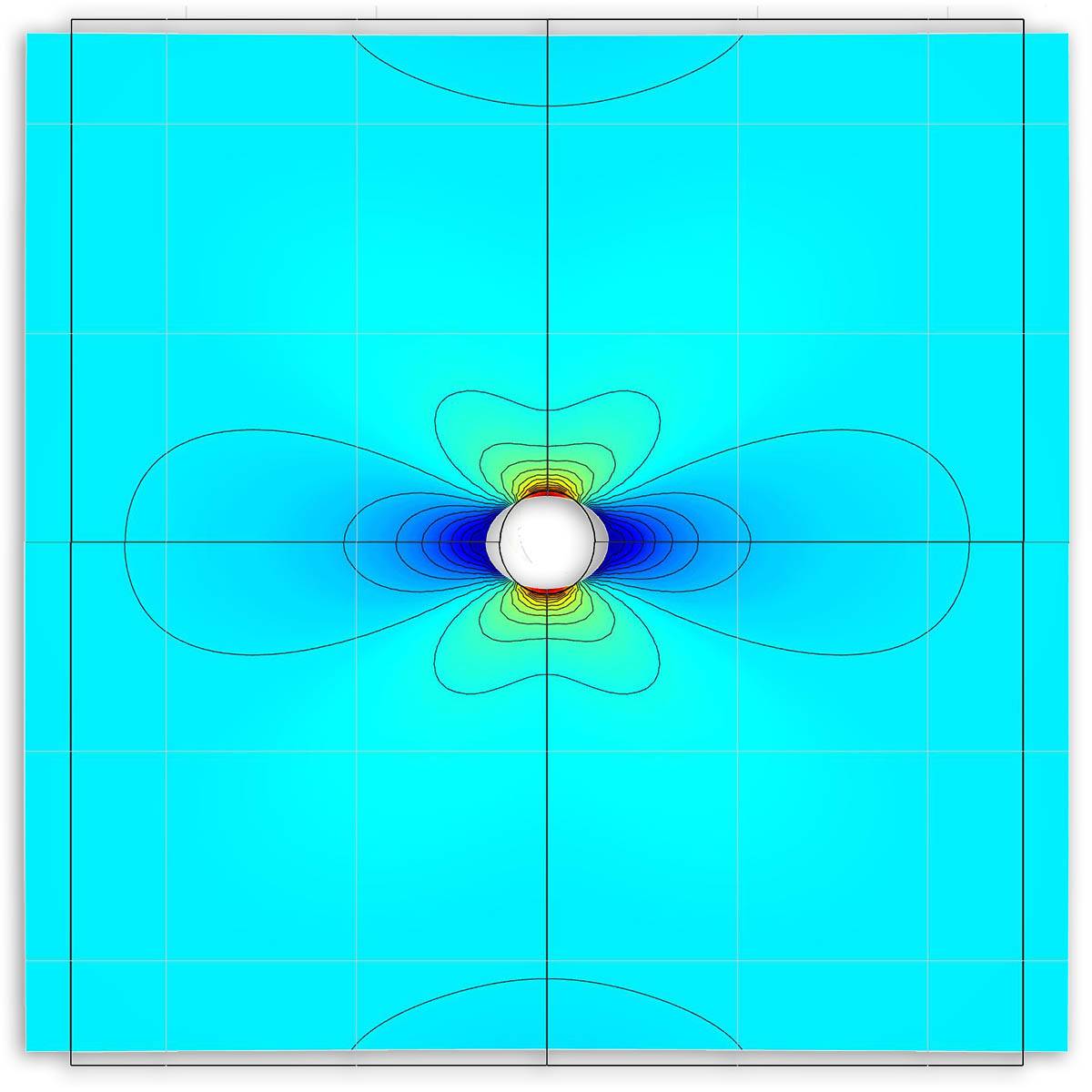This example is a well known benchmark test case from structural mechanics, a thin plate with a circular hole in the center is subjected to a load and stretched along the horizontal axis.
The plate is thin enough to satisfy the two dimensional plane stress approximation, and since both the problem and solution will be symmetric around the hole it is enough to model a quarter of the plate. The computational geometry here therefore consist of a 0.05 by 0.05 m square with a quarter of a circle with radius 0.005 m removed from one corner. Due to the symmetry the displacement of the left edge of the plate should be zero in the x-direction, and similarly the y-displacement for the lower edge should also be zero. Furthermore, a horizontal force of 1000 N is applied to the right edge. With a plate thickness of 0.001 m, the resulting load will be 1000/(2·0.05·0.001) N/m2.
Assuming that the plate is made of steel with a Poisson ratio of 0.3 and modulus of elasticity 210·109 Pa then it is expected that the maximum stress in the x-direction will be three times the stress of a plate without a hole, that is σx = 3·1000/(2·0.05·0.001) = 3·107 Pa [1]. The computed stress along the left side vertical boundary is compared against the theoretical reference results in the figure, clearly showing very good agreement.
How to set up and solve the thin plate with hole example with the FEATool graphical user interface (GUI) is described in the linked step-by-step tutorial and video instructions. Alternatively, this tutorial example can also be automatically run by selecting Model Examples and Tutorials > Quickstart > Thin Plate with a Hole from the File menu, and is also available as the MATLAB simulation m-script example ex_planestress1.
Reference
[1] E.G. Kirsch, Die Theorie der Elastizitaet und die Beduerfnisse der Festigkeitslehre, Zeitschrift des Vereines Deutscher Ingenieure, Vol. 42, pp. 797-807, 1898.
